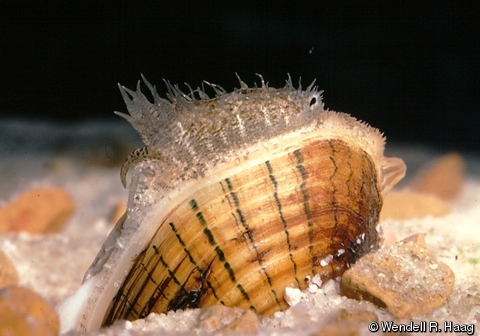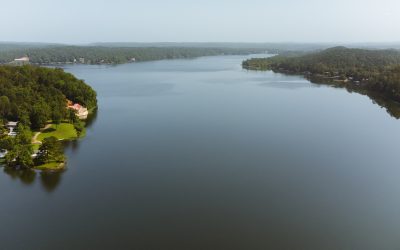
Alabama Power Company’s Gaston Steam Plant on the Coosa River. Flight provided by SouthWings. Photo (c) Frank Chitwood 2017
Did you know that nearly one million pounds of toxic chemicals are dumped into the Coosa River each year? Nearly 95% of that waste comes from two Koch Foods chicken processing plants near Gadsden in the form of nitrate compounds. Excessive nitrogen pollution stimulates the growth of aquatic plants, weeds and algae, which fishermen and lake goers alike know grow in excess on Coosa River lakes. Too much nitrogen in drinking water can also be harmful to young children and livestock.
When looking at the most harmful chemicals though, the Gaston Steam Plant in Wilsonville and the Resolute Forest Products Coosa Pines paper mill in Childersburg outpace others. In fact, Alabama Power’s Gaston Steam Plant released three times as much developmental toxins to the river, at 473 pounds, as all the other facilities in the basin combined.
This data comes from EPA’s 2015 Toxic Release Inventory, to which industries are required to report the amount of toxic chemicals they released to air, land and water. Coosa Riverkeeper analyzed that data, comparing which facilities discharged the most toxic waste to the river.
“Toxic chemicals in our rivers and lakes aren’t just bad for the fish. Most Alabamians get their drinking water from our rivers, ” say Coosa Riverkeeper, Frank Chitwood. “Removing these toxic chemicals from drinking water costs money that ultimately gets passed on to ratepayers. Industries should not be allowed to externalize their cost of doing business onto the people of Alabama in the form of toxic pollution.”
 Some toxic chemicals discharged by these industries, namely mercury, are known to accumulate in fish to such great extents that they can pose a risk of illness to humans that eat their catch. There are dozens of fish consumption advisories on the Coosa River for PCBs and mercury, two industrial pollutants. At least two industries, National Cement Company in Ragland and Lhoist North America in Calera, reported discharging mercury to streams in the Coosa Valley in 2015. Others, including the Gaston Steam Plant in Wilsonville discharged mercury to the atmosphere which may ultimately end up in waterways. In total, 17 facilities in Alabama reported discharging mercury to waterways in 2015.
Some toxic chemicals discharged by these industries, namely mercury, are known to accumulate in fish to such great extents that they can pose a risk of illness to humans that eat their catch. There are dozens of fish consumption advisories on the Coosa River for PCBs and mercury, two industrial pollutants. At least two industries, National Cement Company in Ragland and Lhoist North America in Calera, reported discharging mercury to streams in the Coosa Valley in 2015. Others, including the Gaston Steam Plant in Wilsonville discharged mercury to the atmosphere which may ultimately end up in waterways. In total, 17 facilities in Alabama reported discharging mercury to waterways in 2015.
For the most part, the discharge of these chemicals is legally authorized and permitted by the Alabama Department of Environmental Management through their National Pollution Discharge Elimination System, which, ironically, was created with the goal to eliminate the discharge of pollution to our rivers by the 1980s but instead perpetuated a system that legalizes sometimes harmful water pollution.
On the Coosa River, two chicken processing plants near Gadsden owned by Koch Foods were by far the largest dischargers of toxic waste in 2015, at over 450,000 pounds each, mostly of nitrates compounds. Alabama Power Company’s Gaston Steam Plant in Wilsonville, meanwhile, was the largest discharge of cancer causing chemicals, developmental toxics and reproductive toxics. Resolute Forest Products Coosa Pines paper mill was the second largest discharger of cancer causing chemicals and reproductive toxins.
Our Riverkeeper Patrol Program works to reduce pollution in the Coosa River. Support it today with a donation of $10 or more.

Waste Ponds at Resolute Forest Products on the Coosa River (seen in the background). Flight provided by SouthWings. Photo (c) Frank Chitwood 2017
Although great effort was made to assure the accuracy of these reports, errors and omissions are possible in both the original dataset provided by EPA and in the subsequent analysis of data by Coosa Riverkeeper, Inc. The analysis is based on data from 2015 which is the most recently available data.
Click here to see ranked tables of all dischargers in the state of Alabama. (All units are pounds)
Click here to see a ranked table of dischargers in the Coosa Valley. (All units are pounds)




